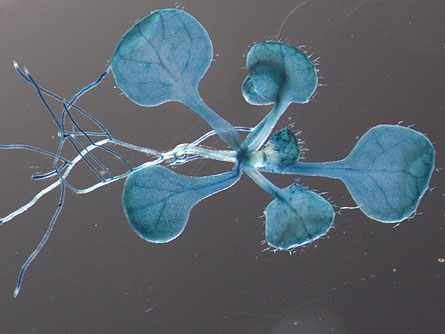- More than 2 years ago
Plants do shift work too. Researchers have now discovered an important worker on the second shift.

Jose Pruneda-Paz, Steve A. Kay and their colleagues at the University of California, San Diego report in the March 13 Science that they have found a missing link in plants’ circadian clocks. A regulatory protein called CHE connects a morning cycle to an evening cycle.
Daily rhythms in plants, animals and microorganisms are governed by circadian clocks. Even though the clocks keep time in much the same way, the genes and proteins that make up the gears differ. Scientists are still uncovering all the gears of plants’ clocks.
Plants have a large number of regulatory proteins, called transcription factors, which wind the clock and keep it running on time. These transcription factors are organized in multiple feedback loops that help make timing more precise, Kay says.
People used to think of the circadian clock as a simple circle, but no more. “All of a sudden it’s turned into something that looks like the Olympic flag, multiple interlocking loops,” Kay says.
Scientists previously discovered that the morning shift in plants is governed by a protein known as CCA1, and the night shift is under control of TOC1. But researchers didn’t know who punched the clock on the second shift.
In the new study, Kay and Pruneda-Paz used a new method to find CHE, a second-shift foreman. CHE starts work in the late afternoon and early evening. Its job is to shut down production of CCA1, the researchers found. Later, TOC1 is produced and interferes with CHE, possibly by degrading CHE during the night. Once CHE is gone, CCA1 can turn on again and start the morning shift.
Researchers at the University of California, San Diego engineered these mustard plants to produce a firefly protein called luciferase. The luciferase gene is regulated by a control panel that normally governs a gene called CCA1 — which produces a protein that plays an important role in plants’ circadian clocks. By watching when the light-producing luciferase turns on and off, the researchers can monitor CCA1 activity.
Credit: Video courtesy of Steve A. Kay, courtesy of Science/AAAS






